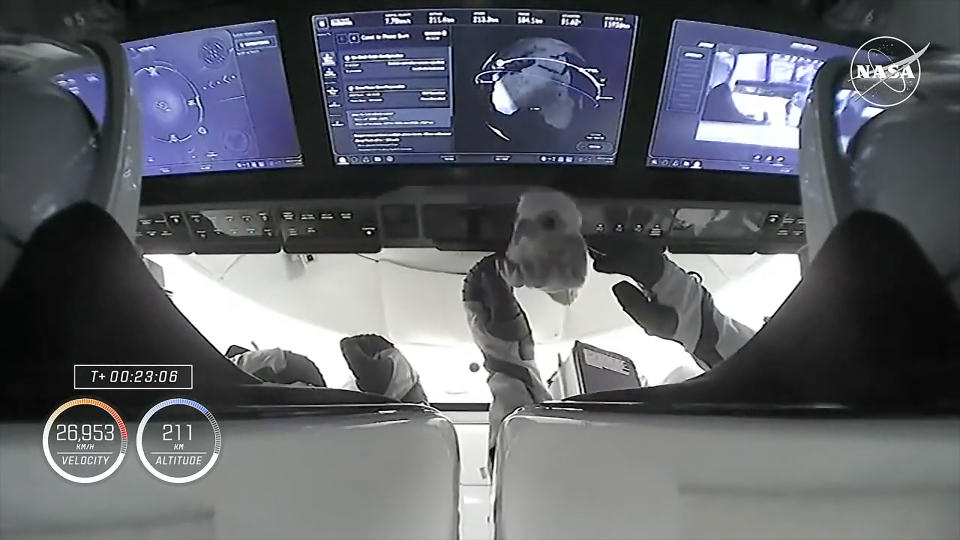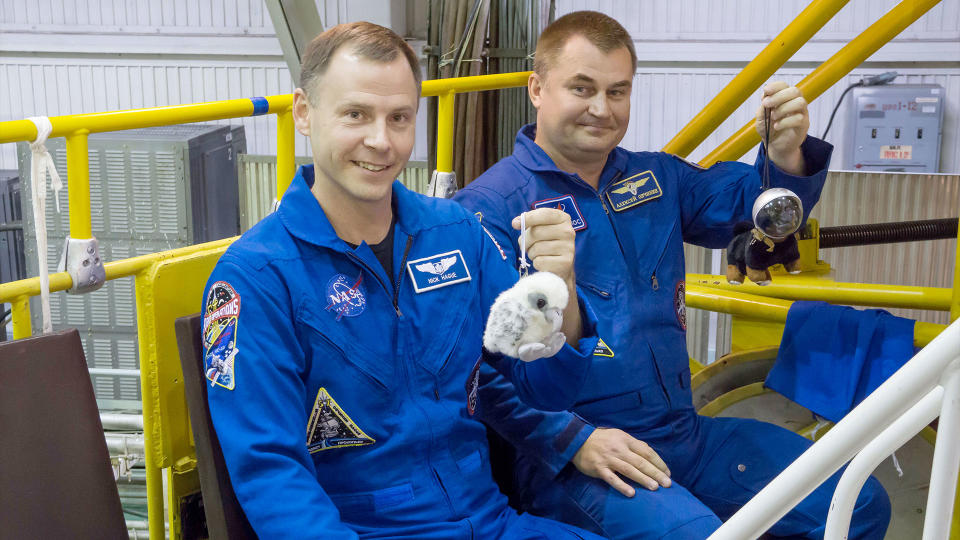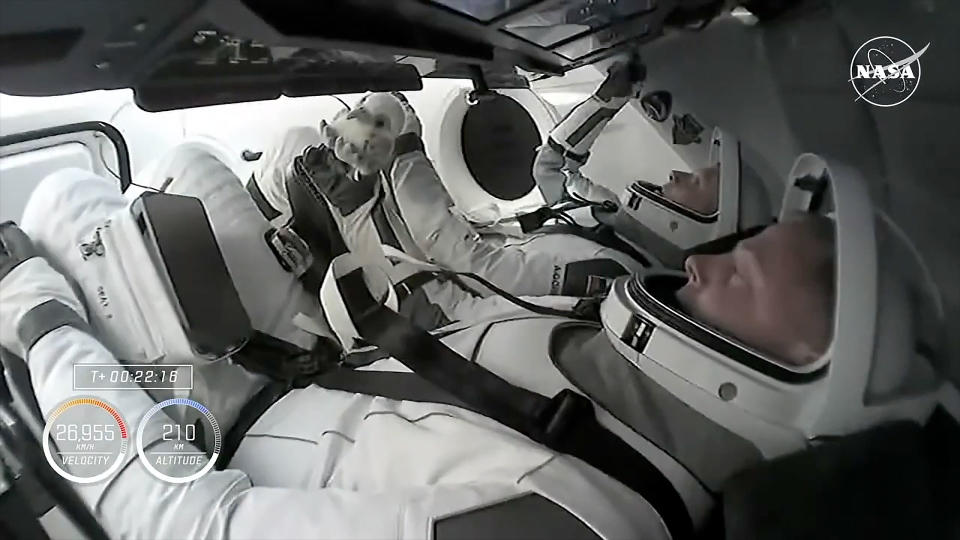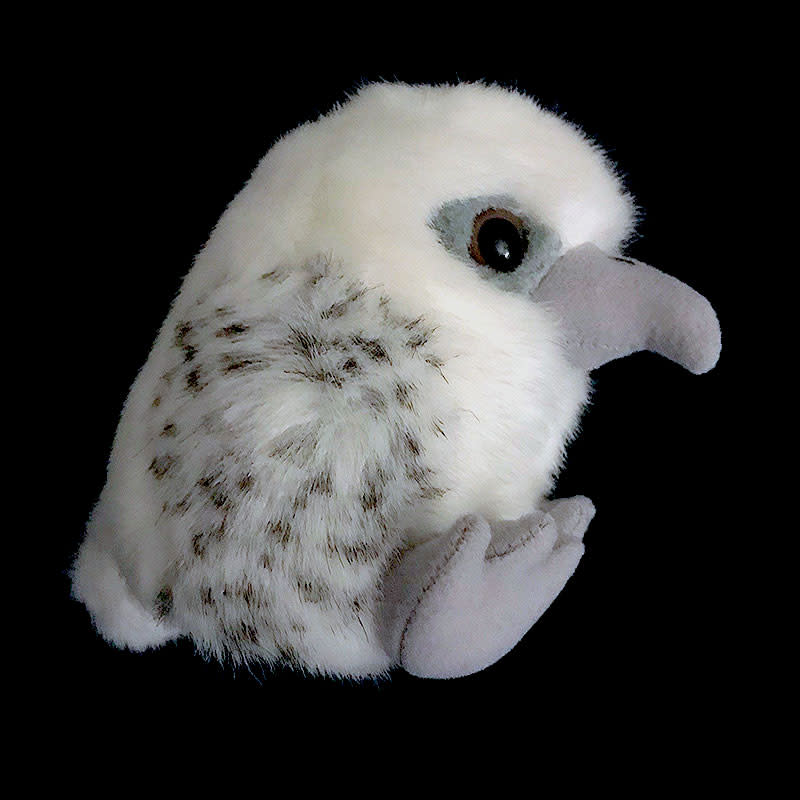When you buy through links on our articles, Future and its syndication partners may earn a commission.


A tradition borrowed from the Russian space program has now physically crossed over to an American spacecraft for the first time.
The “zero-g [gravity] indicator” that launched aboard SpaceX’s Crew-9 mission to the International Space Station on Saturday (Sept. 28), previously flew on two Russian Soyuz capsules, including one that survived an emergency in-flight abort.
“I’ve got a little Falcon here,” said NASA astronaut and Crew-9 commander Nick Hague, as he revealed the small plush baby falcon in the crew cabin of SpaceX’s Dragon spacecraft “Freedom.”
Hague and mission specialist Aleksandr Gorbunov of Roscosmos had just entered orbit after a nine-minute ride atop a SpaceX Falcon 9 two-stage rocket, as was evident by the toy falcon floating on the end of its tether, hence it being a “zero-g indicator.”
“I love the fact that a Falcon 9 [launched] Crew-9 and we’ve got a falcon on board with us,” said Hague. “This one is a multi-flyer, though. It was on my first flight with Aleksey [Ovchinin] and I, and with Aleksey, I and Christina [Koch]. So say hello to ‘Aurora.'”


Hague’s first attempt at flying to the International Space Station ended about three minutes into the October 2018 flight when the Russian Soyuz FG rocket that he and Ovchinin (and Aurora) were riding on failed. A launch escape tower pulled their Soyuz MS-10 spacecraft away from the booster and set them loose to make a ballistic landing.
Five months later, Hague, Ovchinin and Aurora lifted off again, this time on Soyuz MS-12, and successfully made it to the space station.
Hague’s (and Aurora’s) third launch and second time to space on Saturday went just as smoothly, and even made some history. The Crew-9 launch marked the first human spaceflight to fly from Space Launch Complex-40 (SLC-40) at Cape Canaveral Space Force Station in Florida. All previous crewed Dragon flights had lifted off from the nearby Complex 39A at NASA’s Kennedy Space Center.
Hague also became the first active member of the U.S. Space Force to fly from a Space Force launch pad.


Hague and Aurora will be reunited with Ovchinin when they arrive at the station on Sunday. The Russian cosmonaut arrived at the orbiting complex on Soyuz MS-26 earlier this month and will serve with Hague as members of the ISS Expedition 72 crew for the next five months.
Hague and Gorbunov will then return to Earth on “Freedom” with NASA astronauts Butch Wilmore and Suni Williams, who launched to the space station on Boeing’s Starliner Crew Flight Test in June. NASA reassigned Wilmore and Williams to ride home on Dragon after technical issues with Starliner gave rise to safety concerns. On Sept. 6, the Boeing capsule “Calypso” made a safe, but uncrewed touchdown.
The change resulted in reducing the Crew-9 launch crew by two. NASA astronauts Zena Cardman and Stephanie Wilson were removed so that Wilmore and Williams had seats for the ride home.
“I absolutely love the history that this zero-g indicator has for Nick, specifically, and I’m sure Alexey will be happy to be reunited with [it] as well,” said Cardman, who joined NASA’s coverage of the launch. “[They’re] getting the band back together.”


Aurora is a bean bag-type stuffed falcon that was marketed by Puffkins (Swibco) under the name “Swoop.” First made in 1994, the toy is no longer in production.
The idea to fly a zero-g indicator can be traced back to the first human spaceflight by Soviet-era cosmonaut Yuri Gagarin. He packed a small doll aboard his Vostok spacecraft so he could watch it float as he completed an orbit around Earth in 1961. The same doll was flown to the Mir space station in 1991 to mark the 30th anniversary of Gagarin’s flight.
Other Soyuz commanders have re-flown their zero-g indicators. Aleksandr Skvortsov, who launched on three flights to the space station before retiring, chose the same toy duck every time. Similarly, Fyodor Yurchikhin launched four times with the same white puppy that he was gifted by a high school teacher in 1976.
Hague is the first American astronaut to re-fly a zero-g indicator since the tradition began on U.S. spaceflights in 2019. “Suhail,” the mascot for the United Arab Emirates (UAE) astronaut program, was also carried on Soyuz and Dragon, but by two different Emirati crew members and in the form of two dolls of distinct designs.
Click through to collectSPACE to watch video of “Aurora,” the SpaceX Crew-9 zero-g indicator, floating aboard Dragon “Freedom.”
Follow collectSPACE.com on Facebook and on Twitter at @collectSPACE. Copyright 2024 collectSPACE.com. All rights reserved.
